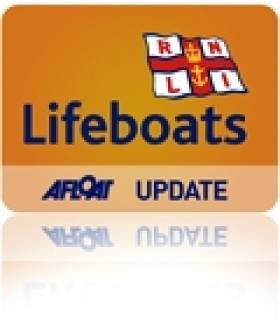Displaying items by tag: Storm Force
Donaghadee RNLI Rescues Man In Boat Breakdown
#RNLI - Donaghadee RNLI has rescued a man after his boat got into difficulty off the Co Down coast.
- In good weather conditions, the volunteer crew launched the all-weather lifeboat at 3.07pm yesterday (Wednesday 26 June) to go to the aid of a casualty off Mew Island.
It followed a request by Belfast Coastguard which had received a call from the owner of the 4m boat to say his vessel had broken down and had starter motor problems.
The lifeboat located the boat north of Mew Island, where it was taken safely under tow by the crew and brought to Donaghadee Harbour.
Earlier in the week, a group of young people from the RNLI Storm Force visited the Donaghadee lifeboat station for a guided tour that emphasised the importance of safety on the water.
The children and their parents were given a warm welcome by coxswain Phillip McNamara and members of the station, who explained the work they do when they respond to emergencies - including getting into their lifeboat gear and jackets in a hurry!
Public Warned To Avoid Coastal Areas As Storm Force Winds Sweep In
#Weather - The Irish Coast Guard has warned the public to stay away from coastal areas today (Friday 28 December) as high winds are expected to reach speeds of as much as 140km per hour in some exposed areas.
It marks the third weather warning for gale force winds this week, as Met Éireann advises of south to south-west winds developing during the day with gusts of 90-100km per hour.
Exposed parts of Connacht and Donegal are set to face the worst of the storm-force winds, with severe gusts of storm force 10 - 100-140km per hour - expected between 6pm and 9pm on the coast from Slyne Head to Erris Head to Malin Head.
Speaking to The Irish Times, meteorologist John Eagleton suggested the possibility of trees coming down and electrical poles falling as the winds strengthen over the course of the day.
"We will get a blast around the evening time," he said, "and I wouldn't like to be sailing a boat along the west coast during those hours."































































